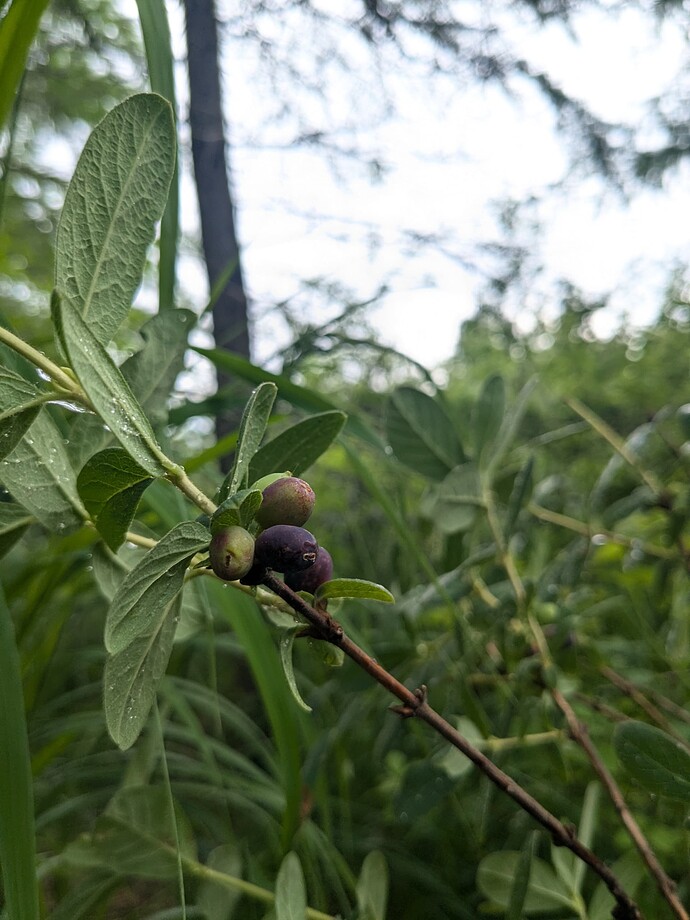I’m setting out on a multi-year journey of locating, propagating and ultimately selecting improved lines of Lonicera villosa (aka Mountain Fly Honeysuckle); the North American edible blue honeysuckle.
I’m starting this thread to both document my efforts and start the discussion around this species as a whole.
There has been some discussion of it in the past on the forum:
Some helpful links to get us started:
https://gobotany.nativeplanttrust.org/species/lonicera/villosa/?pile=woody-angiosperms
https://plants.sc.egov.usda.gov/home/plantProfile?symbol=lovi
Where I stand today with the project:
I am in the very early stages of the project. Which is mainly researching and acquiring germplasm. I have a trip planned for Downeast and Central Maine this spring/early summer to acquire propagules from several different wild populations (the app iNaturalist has been a very helpful tool in planning out my search area).
I have also contacted and been in communications with a professor @ UMaine who has worked with the species and they have been very helpful in this initial planning phase of the project. They have also agreed to collaborate with me on the project and provide and trade propagules this spring.
If any members here know of any local plants and would like to send me propogules it would be very much appreciated. The more the merrier!
Goals of the project:
Phase 1- locate and obtain local propagules, so that I may propagate and offer wild type plants to the general public. To my knowledge, no nursery is currently carrying the species in their offerings (if you know of any please let me know!)
Phase 2- evaluate and breed improved lines of L. villosa
The rough breeding plan is as follows:
Step 1: acquire germplasm and grow it out
Step 2: evaluate wild types and propagate best specimens for sale to public
Step 3: establish an open pollinated breeding block and save seed once fruiting.
Step 4: plant out several hundred seedlings from the breeding block.
Step 5: evaluate F1 seedlings (for flavor, vigor and disease resistance) and create intentional crosses from best possible parents
Step 6: grow out and evaluate F2 seedlings once fruiting
Step 7: name and release best specimens from the F2 group
Step 8: repeat previous steps to improve best lines
Why bother?
-
To make wild type plants more readily available to backyard growers.
-
I believe there to be a real potential in the flavor of the fruit, flavor that may potentially compete with the best haskap cultivars - Dr. Bors of canadian haskap breeding fame says this about L. villosa (which he spent great time procuring all over canada for the hybridization efforts going on @ the U of SK): “A very exciting quality of the wild Canadian fruit was that almost all of them tasted good! This is in startling contrast to Russian reports that good tasting fruit was very rare (but did occur) especially in Northern Europe and North-Eastern Asia. Also it seemed that the good flavour was somewhat different than the good flavour of other breeding material. It may be that this material will be valuable for enhancing the taste of future cultivars.”
-
There is also the elephant in the room that should be addressed. Maine has listed the Haskap (Lonicera caerulea) on the invasive plant “watch list”. This list does not inhibit the sale of Haskap currently, but this may be a sign of things to come with this species. I intend to get ahead of this, and select for a “fully native” line of edible blue honeysuckle so that there is a viable alternative for growers in my state and others where this may become a problem.
-
For the fun of it!
I am fully aware of the time commitment necessary for such an endeavor, but Rome wasn’t built in a day and every great project needs to start somewhere…might as well be now! I’ll continue to document my progress as things are underway.











